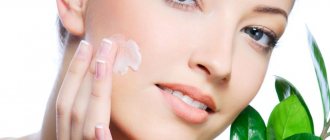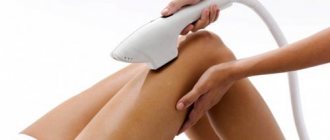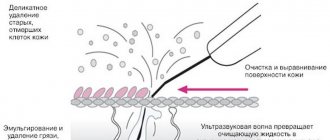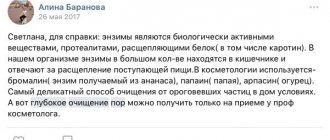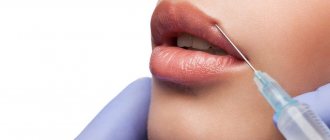The skin of the face is one of the most unprotected areas of the human body, exposed to many external factors 24 hours a day. The use of modern cosmetology products makes it possible to reduce the level of this impact, but it is simply impossible to completely eliminate it. High levels of air pollution, temperature changes, bright sunlight, wind, dust - the list goes on for a very long time. On top of that, the skin experiences natural age-related changes, which are even more difficult to resist. In combination with the stress that regularly occurs in residents of large cities who are active, a negative result does not take long to arrive. The 21st century has given women many progressive methods that, with little effort, can effectively and safely improve the condition of their skin and prolong its youth for a long time. Two methods of cosmetic therapy have recently gained deserved popularity - bioreparation and biorevitalization. Let's look at the features of each method.
Description of the facial bioreparation procedure
Bioreparation is a very effective procedure that deeply moisturizes and rejuvenates facial cells. This procedure is carried out by special injections of hyaluronic acid with the addition of amino acids, vitamins and peptides. Helps normalize the skin's natural moisture level.
The most important advantage of this procedure is its high efficiency, improved appearance and increased elasticity and strengthening of the oval of the face. This procedure copes with eliminating problems of any complexity with the correct combination of various substances. It is because of this that many women give their preference to her.
The complex of vitamins regulates proper metabolism and starts the process of collagen production. Peptides destroy excess fat, tighten and strengthen the oval of the face, relieve puffiness and help remove salt from the body. Amino acids protect epidermal cells from aging.
After completing a course of bioreparation, the effect lasts for about six months, then it is necessary to repeat the course of injections.
Bioreparation in detail
The bioreparation procedure has many indications. These include problems with pigmentation, skin defects (scars, scars, acne), small wrinkles, stretch marks and elimination of the consequences of unsuccessful cosmetic procedures.
The principle of action is to restore smooth, elastic skin due to the regeneration of collagen and elastin in the layers of the epidermis, which ultimately leads to a renewal process. To do this, a drug is injected under the skin, which is a mixture of vitamins (for example, vitamin C improves skin tone and has antioxidant properties, and riboflavin helps absorb oxygen), mineral elements, amino acids (provide intense protection against negative effects) and proteins. Pharmaceutical manufacturers offer a wide range of specialized drugs for injection:
- Mesovarton (a cocktail of vitamins, hyaluronic acid and peptides counteracts the aging process) - MesoXanthine (a mixture of vitamins, peptides and seaweed is successfully used when the first skin problems arise).
- BioExpander (a complex preparation that stimulates regeneration at the cellular level, intensively moisturizes the skin and provides a pronounced rejuvenating effect; hypoallergenic, has an environmentally friendly composition).
- IAL-System Duo (used to correct the shape of the face in the cheeks, lips and cheekbones, does not cause complications).
- SKIN-B and SKIN-OX (the first eliminates wrinkles and cosmetic defects such as “bags” under the eyes, is used in a course of weekly injections; the second helps restore skin firmness and elasticity, perfectly fights pigmentation and characteristic changes due to age).
- Hyalripayer (fights specific defects such as drooping eyelids and subcutaneous fat, tightens facial skin; main active ingredients are carnitine and ascorbic acid).
Highly effective procedure - bioreparation, price in Moscow at the Celine clinic
Benefits of the procedure
This procedure has many undeniable advantages compared to other facial skin rejuvenation procedures:
- No rehabilitation required
- The procedure does not cause pain
- Copes with a wide variety of cosmetic problems
- Already after the first session the result will be noticeable:
- Pigmentation becomes lighter
- The skin takes on a healthy tone
- Bruises under the eyes and swelling disappear
- Wrinkles are smoothed out
- The facial contour becomes clearer, the elasticity of the dermis increases
An even clearer result appears after a couple of weeks.
STAGE I Diffuse treatment of the “face - neck - décolleté” area (Fig. 1).
Technique:
papules.
Needle:
30G (0.3 × 4 mm, 0.3 × 13 mm).
Insertion depth:
the upper layer of the dermis (needle cut).
The needle is inserted with the bevel upward at a minimal angle to the surface of the skin. Injections are performed along Langer's lines from the center to the periphery from bottom to top. Diameter of papules: on the face - 1 mm, on the neck - 2 mm, on the décolleté - 3 mm. Distance between injections: on the décolleté - 3.0 cm, on the neck - 2.0 cm, on the face - 1.0 cm (Fig. 2).
RICE. 1. TREATMENT OF THE ZONE USING THE “PAPULES” TECHNIQUE.
RICE. 2. SCHEME OF DIFFUSE PROCESSING ZONE.
Procedure for facial bioreparation
The course consists of approximately 3 to 5 procedures, within 30 minutes. An additional number of sessions will be prescribed to you by a cosmetologist based on the result and individual characteristics.
Let's look at how this procedure works:
- Anesthesia. The use of injections for pain relief can cause pain, so cosmetologists use a special cream.
- Skin cleansing. Removing all contaminants and germs prevents infection.
- Administration of drugs. All injection packages must be opened in front of you so that you can see that they are sterile and are being used for the first time. The syringe is inserted 1 cm into the face, and 2 cm into the décolleté area.
- Using cosmetic cream to relieve irritation. It is designed to speed up recovery processes, eliminate the risk of complications and increase the effect of the procedure.
Prices for bioreparation abroad
The bioreparation procedure is offered in beauty salons in Russia, the CIS countries and Europe; other aesthetic clinics around the world use analogues of bioreparations - revitalizants. Before carrying out a course of injections, it is important to carefully study the composition of the product. The cosmetologist is obliged to consult you in advance, as well as answer any concerning questions regarding these manipulations with your face.
Bioreparation and biorevitalization procedures are especially popular among residents of Great Britain, Finland, Austria, France and China. Since ladies regularly undergo injection courses, in order to save money, they purchase subscriptions to beauty salons or purchase drugs for several sessions. The services of a cosmetologist, of course, are paid one-time at current rates.
The use of hyaluronic acid in injection rejuvenation techniques has made the whole world believe that even without plastic surgery it is possible to slow down the aging process. Recently, in Russia, more and more representatives of the fair sex are interested in this rejuvenation technique.
Russian beauties prefer to have the procedure performed by experienced specialists in European countries, despite the fact that the price of bioreparation there is significantly higher. Russian women visit the UK, Finland, Italy, the Czech Republic, and France in order to rejuvenate and become even more beautiful.
Great Britain
Approximate cost:
- the cost of one bioreparation procedure (drug and cosmetologist’s services - from 350 euros);
- visa application – from 67 euros;
- flight – from 280 euros;
- accommodation from 37 euros.
Total: 734 euros.
UK clinics are characterized by excellent service and quality of medical services.
Finland
Approximate cost:
- cost of bioreparation – from 341 euros;
- visa application – from 37 euros;
- flight – from 275 euros;
- accommodation – from 35 euros.
Total: 688 euros.
Finland is famous for its incredibly beautiful nature, which is protected in every possible way. There is no doubt that in other areas, Finns treat their activities responsibly and carefully.
Italy
Approximate cost:
- price per session – from 327 euros;
- visa application – from 125 euros;
- flight – from 312 euros;
- accommodation – from 30 euros.
Total: 794 euros.
Bioreparation preparations made in Italy are very popular and distributed throughout the world. There are often promotions and discounts for the procedure. Therefore, you can save a lot and spend the remaining money on pleasant purchases.
Aftercare
After a bioreparation session, it is important to properly treat your face. To achieve maximum results, you need to follow some advice from cosmetologists:
- It is strongly recommended to avoid alcohol consumption because... it promotes expansion and inflow through the blood vessels, which leads to rapid removal of the injection from the body and reduces the effectiveness of the procedure.
- After the procedure, it is forbidden to apply warm compresses or visit baths and saunas for several days.
- To protect injection sites from irritation, it is necessary to treat them with disinfectants.
- It is necessary to completely avoid massage during the course and for 2 months after it. It accelerates blood flow by removing active substances.
- To prevent age spots from appearing, use sunscreen until the injection marks are completely healed.
As a rule, bioreparation is used in combination with other facial skin rejuvenation procedures.
Indications and contraindications for skin bioreparation
The main indications when it comes to facial skin are as follows:
- dehydration and dryness;
- pronounced age-related changes: ptosis, folds, creases, loss of skin elasticity;
- acne and post-acne, scars of various origins, burns.
The method is also effective on the skin on the body. In particular, it allows you to improve the condition of the skin with cellulite, correct (make less noticeable) stretch marks. There are few contraindications: allergies, bleeding disorders, inflammatory skin diseases, severe chronic diseases (including endocrine ones). In general, the intervention was well tolerated.
Question answer
After using bioremedies, reactions may occur that are typical for any injection procedures: swelling, itching, hyperemia, bleeding, pain, discoloration of the epidermis in the injection area, hematomas. Typically, such manifestations are temporary and depend on the technique of introducing the filler and the individual characteristics of the patient.
The course is assigned individually. It is carried out according to a fairly convenient schedule - 1 procedure every 3 weeks, which saves time and does not limit daily activity. Up to 6 treatments may be needed.
It is impossible to accurately answer this question. These procedures are very similar. They are also reminiscent of mesotherapy. In each specific case, one or another procedure will be appropriate. A cosmetologist will be able to determine what is right for you.
Expert opinion
- Cosmetologist
- Surgeon
Michelle Ellern
practicing cosmetologist-dermatologist
This procedure is best done for older women. It is perfect for the appearance of wrinkles and pigmentation. For each patient, a different course (about 3-5 sessions) and a drug are selected. I usually recommend doing it up to 2 times a year.
Theda Contis
plastic surgeon
Biorevitalization provides powerful hydration, and bioreparation, in addition, tightens the skin and normalizes metabolic processes in tissues.
To look young and fresh, you should regularly conduct maintenance courses. By the way, the procedure is effective for rosacea and acne. Facial bioreparation is a popular procedure; it is very similar to biorevitalization, but at the same time, it has certain differences, which were mentioned above.
With these injections you can achieve amazing results, which is confirmed by the before and after photos. The main thing is that you choose a good doctor.
When is the effect noticeable?
Usually the cosmetic effect is noticeable after the swelling subsides.
But, given that the cocktail also includes other important components, it can be increasing and become more pronounced within a week.
You need to understand that the speed of the result depends on a number of factors:
- skin thickness;
- a drug;
- severity of cosmetic defect;
- age, etc.
Bioreparants contain more active ingredients than biorevitalizants, so the effect is more effective.
Contraindications (7 prohibitions)
The cosmetic procedure also has its limitations.
CONTRAINDICATIONS
- oncological formations;
- epilepsy;
- dermatoses of various origins, infectious skin lesions in the acute stage in the injection area (for example, herpes);
- blood pathologies;
- bacterial or viral diseases in the acute stage (for example, influenza);
- autoimmune pathologies, immunodeficiency states;
- increased sensitivity to the ingredients in the anti-aging cocktail.
STAGE II Treatment of problem areas (Fig. 3).
A drug:
HYALREPAIR®-02 Bioreparant.
A. Treatment of wrinkles in the periorbital zone (Fig. 4).
Technique:
papules.
Needle:
30G (0.3 × 4 mm, 0.3 × 13 mm).
Insertion depth:
the upper layer of the dermis (needle cut).
Injections are performed using the “papule” technique. The diameter of the papules is 1 mm, the distance between the injections is 0.3 cm.
B. Treatment of the skin of the lower third of the face.
Technique:
tubercles.
Needle:
30G (0.3 × 4 mm).
Insertion depth:
2 mm.
The needle is inserted at an angle of 45° to the skin surface over its entire length. The bevel of the needle is directed downwards. Injections are performed along Langer's lines from the center to the periphery from bottom to top. The distance between injections is 2.0 cm. The amount of drug per injection is 0.03 ml.
RICE. 3. SCHEME FOR PROCESSING PROBLEM AREAS.
RICE. 4. TREATMENT OF WRINKLES IN THE PERIORBITAL AREA USING THE “PAPULES” TECHNIQUE.
B. Treatment of wrinkles in the forehead (Fig. 5), nasolabial folds (Fig. 6).
Technique:
linear-retrograde.
Needle:
30G (0.3 × 13 mm).
Insertion depth:
the upper layer of the dermis.
The needle is inserted with the bevel upward at a minimal angle to the skin over its entire length with retrograde delivery of the drug. The needle can outline but should not show through the skin when injecting correctly.
Additionally, to strengthen the skin, the “bio-reinforcement” technique can be used, in which rows of injections form a mesh and are also located parallel to each other.
RICE. 5. TREATMENT OF WRINKLES IN THE FRONTAL AREA USING LINEAR-RETROGRADE TECHNIQUE.
RICE. 6. TREATMENT OF NASOLABIAL FOLDS USING LINEAR-RETROGRADE TECHNIQUE.
Reviews
ALINA, 32 YEARS OLD:
“I learned what facial bioreparation is from the Internet and decided to do it because the reviews after this procedure were only positive.
From my own experience I will say that it is much better than biorevitalization, because it acts comprehensively. Hyaluronic acid simply moisturizes, smoothes out wrinkles, and bioremedies also contain amino acids, which are building materials for collagen fibers.
Some preparations also contain vitamins and minerals that enrich the epidermis with beneficial substances for beauty and health.”
VICTORIA, 36 YEARS OLD:
“Immediately after the procedure, my face was red, then swelling appeared. When it passed, I noticed that my skin somehow glowed in a special way and became well hydrated, so I even had to change my favorite cream to a product with a lighter and quickly absorbed texture. I completed a course of 5 procedures, the results have lasted for six months.”
Is preparation necessary?
Allergy sufferers often do not realize that they are sensitized to a particular substance until they come into contact with it.
To prevent a strong allergic reaction, the cosmetologist must first check for hypersensitivity to the components of the drug.
For this, a skin test is performed. The specialist makes a small scratch on the hand, onto which he subsequently applies a composition that is subsequently planned to be injected into the skin.
If after 15 minutes there is no local swelling and severe redness, then the procedure is carried out.
However, in practice, such preparation is often ignored and limited to the question: has the client previously had allergic reactions.
Therefore, if the patient is allergic, then it is imperative to insist on a skin test.
Biorevitalization or bioreparation: main differences
- Age. For people under 30 years of age, skin moisturizing, that is, microinjections of “pure” hyaluronic acid, is more suitable. We recommend that men and women over 30 years old prefer bioreparation (hydration + rejuvenation).
- Durability of the effect. After biorevitalization, your appearance will improve quickly - the transformation will happen in 1-2 days. The result of biorevitalization will be noticeable only after 2 weeks. This is how long it takes for the components of the drug to start the process of tissue rejuvenation. But the result of bioreparation is more durable. In addition, you will achieve it with fewer procedures.
Stages of biorevitalization
This non-injection procedure is performed in several stages:
- The skin is thoroughly cleaned of contaminants and treated with an antiseptic.
- A gel is applied to the face, preheated to body temperature.
- The skin is treated with a special device that ensures deep penetration of beneficial substances into the tissue.
- When exposed to the device, the cosmetologist regulates the pulse power required in a particular case.
- Remains of the gel are removed with a damp cloth.
- A special agent is applied to the skin to close the intercellular channels.
- To distribute the product evenly, the cosmetologist performs a light facial massage.
During biorevitalization, harmless drugs that do not cause side effects are used, the basis of which is hyaluronic acid, a substance obtained from tissues of animal origin. As for devices, the procedure can be carried out using oxygen therapy or a laser device. In the first case, the penetration of beneficial substances into the deep layers of the skin is carried out under the influence of an oxygen stream under high pressure. But the most popular is the device that affects the skin using laser beams.
Mesovarton in a clinic in Moscow
Mesovarton provokes intensive restoration of skin cells, but its main property is to increase the number of its own stem cells. In addition to vitamins, amino acids, growth factors and high molecular weight hyaluronic acid, Mesovarton includes the polypeptide “Wharton Jelly Peptide P199”, which was discovered during complex operations on the fetus in the womb. Postoperative tissue healing in the fetus occurs quite quickly, and no scars are formed. Thanks to research, it was possible to remove the polypeptide from the umbilical cord. It is this polypeptide that triggers renewal processes in cells. A synthetic analogue of this polypeptide is part of the drug.
- Increases cell activity and synthesis of its own collagen, elastin and hyaluronic acid, improves skin texture (increases its density)
- participates in the regulation of healing and restoration of the skin, normalizes microcirculation.
- influences intracellular metabolism and stimulates cell growth.
- the strongest antioxidant, models the production of melanin.
- is a powerful anti-inflammatory agent
The discovery of the polypeptide “Wharton Jelly Peptide P199” is associated with the activities of the famous obstetrician-gynecologist surgeon, Doctor of Medicine, Professor Boris Petrikovsky. Dr. Petrikovsky noticed that tissue healing in the fetus always proceeds effectively and without scar formation, and found that this healing process is due to the high proliferative activity of embryonic stem cells in the jelly-like embryonic substance of the umbilical cord “Wharton's Jelly”. As a result of research, a polypeptide was isolated that stimulates cell division. In collaboration with the laboratory of University Medical Center, Long Island, N.Y. Professor Petrikovsky created a synthetic analogue of this peptide, which was named “Wharton Jelly Peptide P199”. For four years, Russian doctors, together with the Fijie Institute (representatives of Meso-Wharton P199), the Institute of Developmental Biology. Koltsov, RAS, results were obtained not only for skin rejuvenation, but also for the treatment of rosacea and skin restoration after laser procedures.
